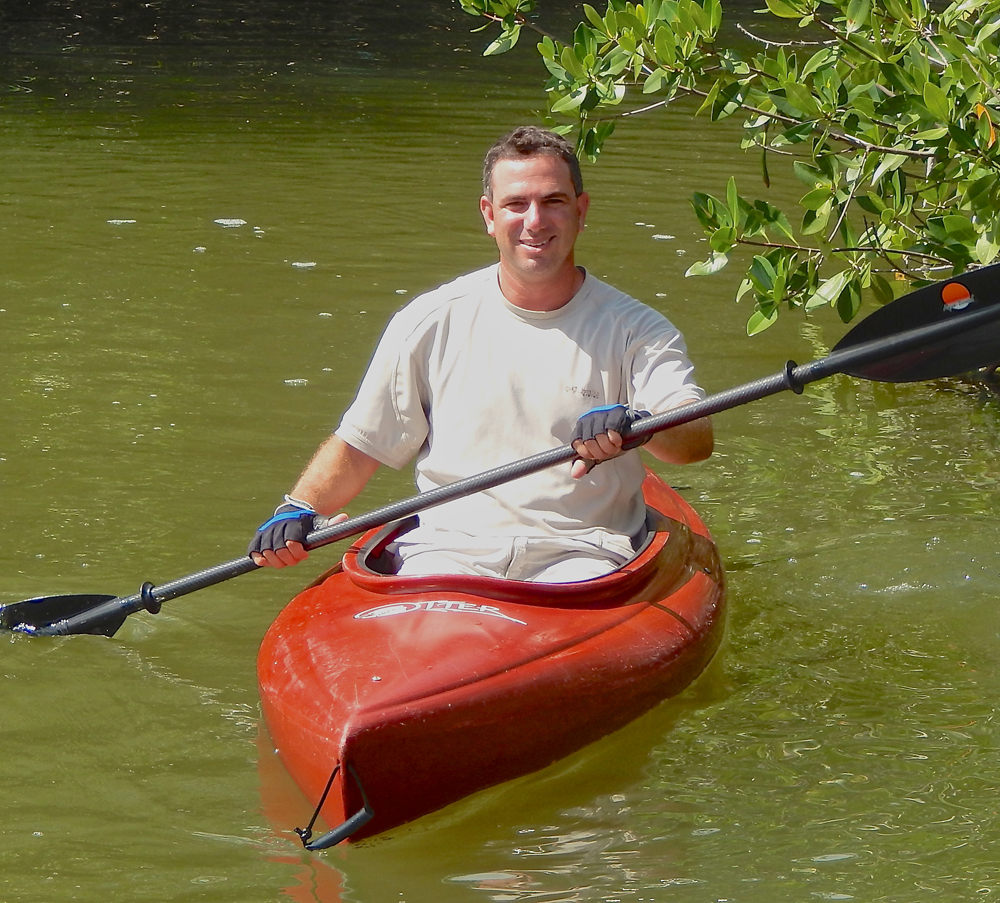Robert Silk has a great love for the Florida Keys’ natural world. He discovered that world after receiving his Master’s degree in journalism from the University of Miami, when he arrived in the Upper Keys to take a newspaper job.
After 10 years of reporting for Keys publications, today he’s a travel writer for the national trade publication Travel Weekly. He telecommutes from his home in Key Largo, blending work with as much Keys kayaking as possible.
Recently Robert’s outdoor outlook inspired him to write “An Ecotourist’s Guide to the Everglades & the Florida Keys,” which was released by the University Press of Florida. And here he offers insights into his favorite activities and places in the region’s fascinating natural environment.
Q. What sparked you passion for the Keys environment and natural world?
“As a kayaker, it didn’t take long for me to get hooked on the Keys and Everglades outdoors. And reporting about the local ecosystem clued me into how dynamic it is, and how fragile. That gave those outdoor excursions deeper meaning for me.”
Q. What made “An Ecotourist’s Guide to the Everglades & the Florida Keys” a book you had to write?
“The Everglades and the Keys form a natural itinerary for outdoorsy travelers, both because water so intricately connects their ecosystems and because each area offers jewels you won’t find anywhere else in the world. But nobody had written a guide making that connection and catering directly to that market.”
Q. What qualities make the Keys and the Everglades the perfect subject for an eco-guide?
“The Everglades is undoubtedly the world’s most famous wetland. The Keys are framed by the third largest barrier reef in the world on one side, and on the other side by shallow estuaries dotted with a patchwork of tiny islands.
“On the very fringe of our area lies Dry Tortugas National Park, which I think is the most spectacular single site in southern Florida. And in total, the area I cover in the book has three national parks, 12 state parks and a patchwork of federal preserves, sanctuaries and refuges that encompass some five million acres of land and water. That’s a lot of material for an eco-guide.”
Q. What do you want your book to communicate to readers? What feelings do you hope it will inspire?
“I want readers to learn about new things they can do in the southern Everglades and the Keys … find places they wouldn’t have known about without this book. And through the many sections where I write about local culture, local history and the delicate balance of the local ecology, I want them to gain a sense of place. When people feel more involved in an area, they naturally become stewards.”
Q. What are the best must-see spots or activities for environmental or adventure visitors in each Keys district?
“For Key Largo I’d have to go with the diving and snorkeling. There are fantastic reefs, such as Molasses and French, as well as the landmark Christ of the Deep statue and a variety of wrecks including the Spiegel Grove.
“My favorite spot in Islamorada is Indian Key. A short paddle takes you to an island that is often almost empty, and has a great historical story to tell.
“In Marathon I enjoy walking the Old Seven Mile Bridge. It’s a 4.5-mile round trip — all of it with fabulous views. Then I like to stop off at Keys Fisheries for what I’d say is the best raw bar, when one combines quality and price, that I’ve been to in southern Florida.
“In the Lower Keys it’s hard to ignore Bahia Honda State Park, with its postcard-perfect stretch of beach, but I also like looking for alligators at the Blue Hole in the National Key Deer Refuge. And the paddling in the Great White Heron National Wildlife Refuge is both outstanding and practically limitless.
“From Key West, camping on Garden Key in Dry Tortugas National Park is a must-do. Closer in, the island is lots of fun to bicycle and it also has an eclectic collection of botanical gardens.”
Q. What’s your favorite activity in the Keys?
“I’m a kayaker. I love exploring mangrove creeks and shallow-water flats. And on any given excursion I never know what I’m going to see — bald eagles, rays, manatees, tarpon, bottlenose dolphin … I can kayak off my yard into a national park. Plus, where else am I going to be able to watch the manatees in the canal through my kitchen window?”




